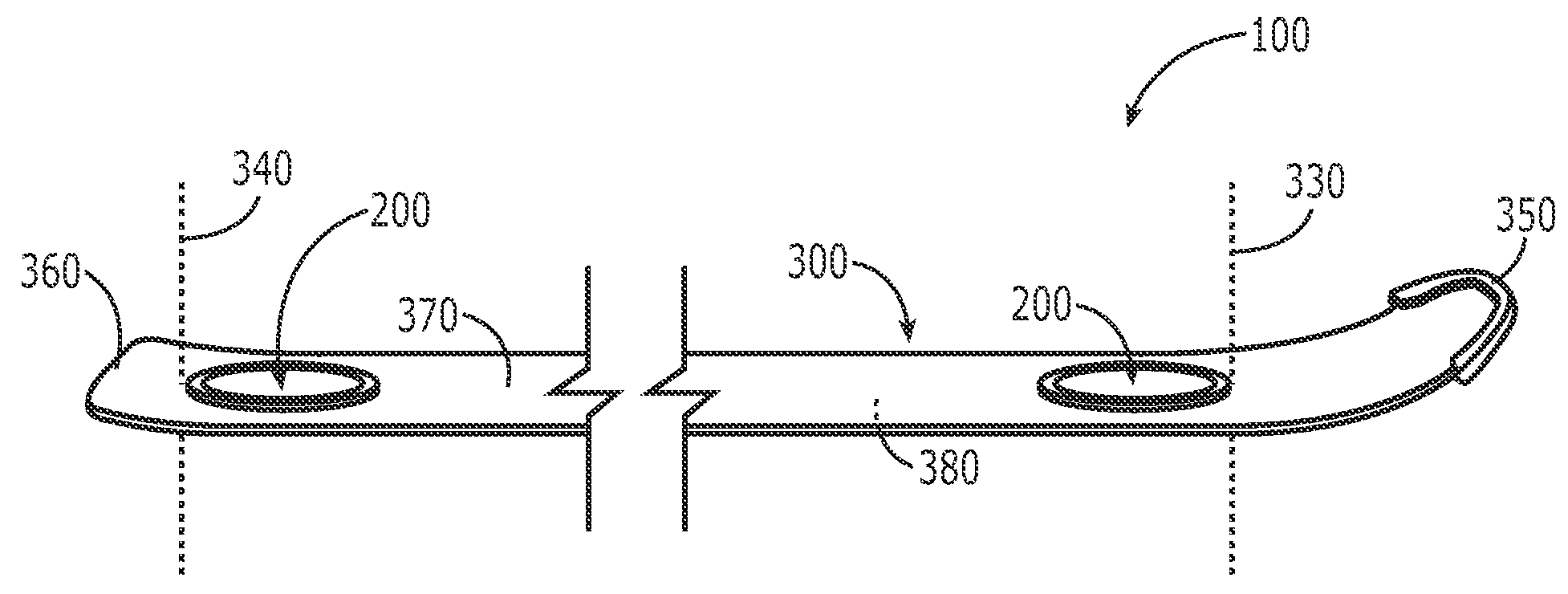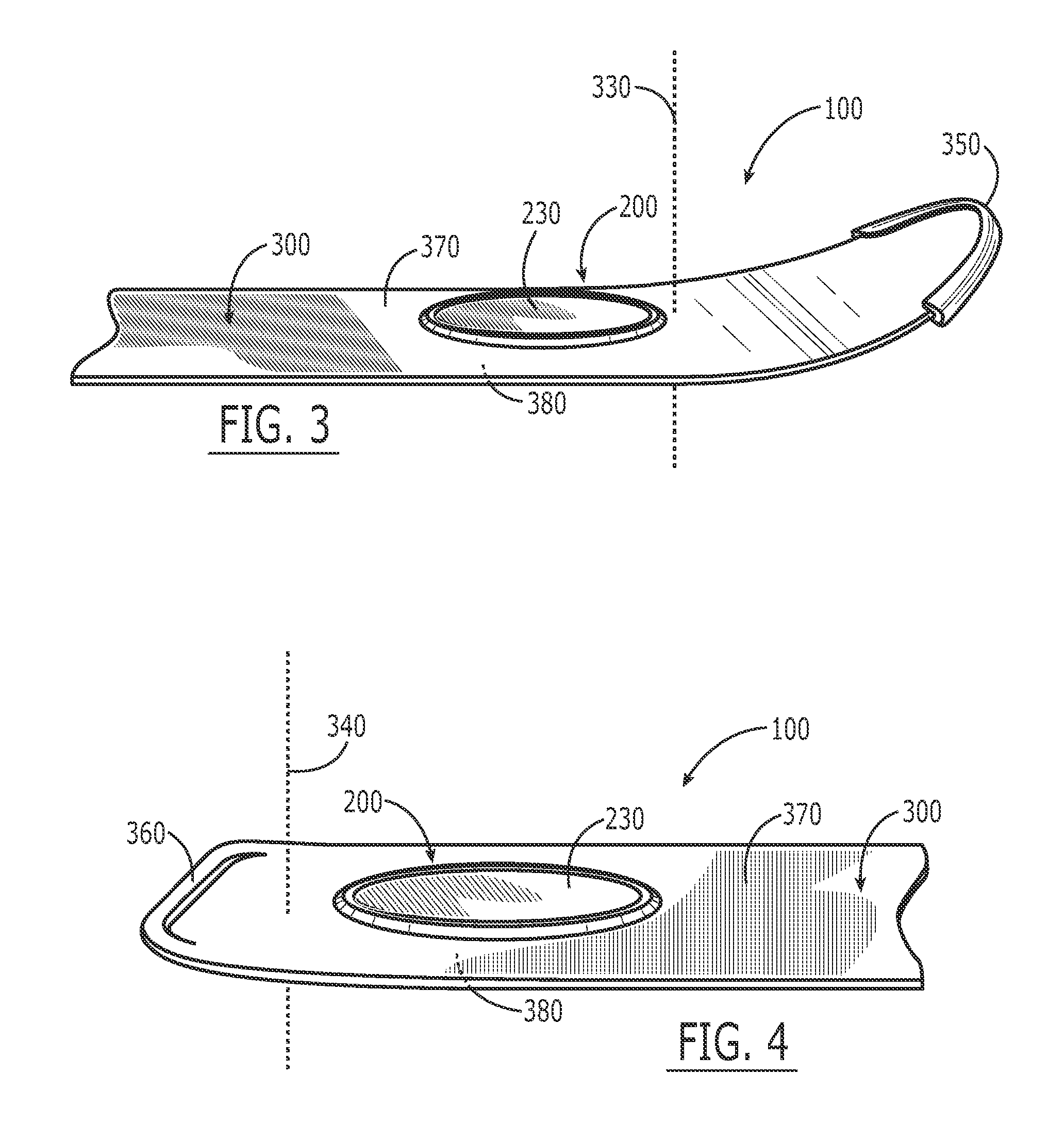Lightweight ski stability system
a stability system and ski technology, applied in the direction of skis, snowboard bindings, skis, etc., can solve the problems of heavy skis and poor performance, and achieve the effects of improving performance, maintaining lightweight characteristics, and increasing the rotational inertia characteristics of lightweight skis
- Summary
- Abstract
- Description
- Claims
- Application Information
AI Technical Summary
Benefits of technology
Problems solved by technology
Method used
Image
Examples
Embodiment Construction
[0015]The present invention relates to lightweight ski systems. One embodiment of the present invention relates to a lightweight ski stability system for improving performance while maintaining lightweight characteristics. The ski stability system includes a ski and one or more weighted members. One weighted member is positioned on the upper surface of the ski within 10 centimeters of the tip contact point. A second optional weighted member is positioned on the upper surface of the ski within 10 centimeters of the tail contact point. The contact points refer to a lengthwise position before the tip or tail laterally curve upward. The weighted members weigh at least 3% of the ski weight. The disposition of these weighted members at one or both of the contact points increases the rotational inertia characteristics of the lightweight ski while minimizing the resulting weight. A second embodiment of the present invention relates to a method of increasing the rotational inertia of a light...
PUM
 Login to View More
Login to View More Abstract
Description
Claims
Application Information
 Login to View More
Login to View More - R&D
- Intellectual Property
- Life Sciences
- Materials
- Tech Scout
- Unparalleled Data Quality
- Higher Quality Content
- 60% Fewer Hallucinations
Browse by: Latest US Patents, China's latest patents, Technical Efficacy Thesaurus, Application Domain, Technology Topic, Popular Technical Reports.
© 2025 PatSnap. All rights reserved.Legal|Privacy policy|Modern Slavery Act Transparency Statement|Sitemap|About US| Contact US: help@patsnap.com



